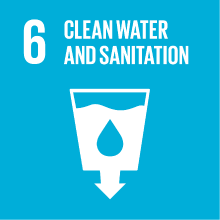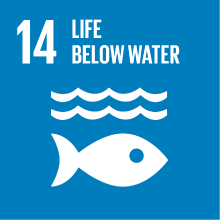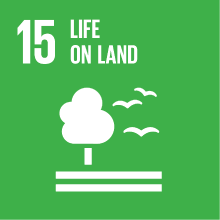HAZARDOUS SUBSTANCES IN CIRCULAR PROCESSES: RISKS ASSESSMENT AND MANAGEMENT
- Academic year
- 2021/2022 Syllabus of previous years
- Official course title
- SOSTANZE PERICOLOSE IN PROCESSI CIRCOLARI: VALUTAZIONE E GESTIONE DEI RISCHI
- Course code
- CM0559 (AF:335892 AR:176518)
- Teaching language
- Italian
- Modality
- On campus classes
- ECTS credits
- 6
- Degree level
- Master's Degree Programme (DM270)
- Academic Discipline
- CHIM/12
- Period
- 1st Semester
- Course year
- 2
- Where
- TREVISO
- Moodle
- Go to Moodle page
Contribution of the course to the overall degree programme goals
The objective is to provide students with the necessary skills for developing and using innovative biotechnological techniques and processes to support circular economy and in particular with the theoretical and practical knowledge for the assessment and management of environmental risks due to the presence of hazardous substances and materials in the investigated products and processes.
Expected learning outcomes
The student will acquire relevant knowledge to evaluate the degree of implementation of circular economy and sustainability concepts through the assessment of risks for human health and the environment along the life cycle of products and processes.
Ability to apply knowledge and understanding
The student will acquire specific skills concerning quantification, assessment and management of risks for human health and the environment in the different phases of the life cycle of products and processes through the application of Risk Assessment procedures, with the final aim to identify the presence of hazardous, priority and emerging, substances in circular processes and guide their substitution or adequate management.
Autonomy of judgment
The student will be able to deal with complex data and information collected from different sources and to analyze and elaborate them for producing clear and accurate summaries, deriving relevant conclusions to suggest any possible actions. In particular, he/she will be able to independently evaluate the risks for human health and the environment of a production process and to suggest, where needed, any improvements.
Communication skills
The student will acquire adequate skills and tools for oral and written communication, modern skills to critical assess, propose and discuss the results of his/her analysis with experts and non-experts, also during events for the presentation and discussion of such results and for the discussion of topical issues related to the development of biotechnologies for sustainable development and the environment.
Learning ability
The student will acquire the ability of learning and deepening aspects of innovative research and resolution of topical issues in the field of application of industrial biotechnologies in a sustainability and circular economy context, in view of an adequate management of risks for human health and the environment due to the presence of hazardous substances and materials in circular processes.
Pre-requirements
Contents
First of all, chemical, physico-chemical and toxicological characteristics of priority and emerging hazardous substances and materials will be presented. Then, relevant European legislation will be addressed, including CLP (Classification, Labelling and Packaging) Regulation and REACH (Registration, Evaluation and Authorization of Chemicals) Regulation. More specifically, attention will be paid to the hazard classification of chemical substances according to CLP (the Waste European Directive is aligned to) and to the Chemical Safety Assessment procedure according to REACH, that includes both risk assessment for human health and the environment along the life cycle of products and processes, and the adequate control of not acceptable risks.
In this context, the concepts of substitution of hazardous substances and of Safe by Design will also be addressed, with case studies.
The fundamental concepts of risk assessment and management for human health and the environment (e.g. sources, targets, bioaccumulation, toxicity), as well as the methodologies adopted at international level and the software available for their application, control and management will be presented in details.
Referral texts
Slides presented by the teacher and additional material, both sent by the teacher.
Assessment methods
Type of exam
Teaching methods
Discussion with students on specific topics
2030 Agenda for Sustainable Development Goals
This subject deals with topics related to the macro-area "Natural capital and environmental quality" and contributes to the achievement of one or more goals of U. N. Agenda for Sustainable Development



